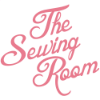Designing your own fashion collection can be very exciting. Putting your big ideas out into the world is amazing. But what happens when it doesn’t go exactly as planned? Your pattern maker didn’t understand your sketch and your samples turned out wonky or the factory made decisions counter to your ideas. Being a designer is hard sometimes! But it doesn’t have to be hard, if you know a thing or two about how the manufacturing process works & how to communicate properly with your team even if it’s just your mom sewing up or helping to sew up your designs.
When attending design school students learn several skills that bolster their ability to both communicate their designs and ideas as well as work within the means of their project. And when I say “Communicating”, it’s not just about using your words, it’s about understanding how garments get put together, which stitches to use and when, as well as how fabrics behave in general. Let’s start from the top.
Fashion Sketching and Flat Sketching
Fashion sketching is usually a presentation style that expresses the look, feel and fabrication of your designs. This is different from a Fashion Illustration which usually expresses more of a feeling and can have a more ephemeral appearance. Fashion Sketching shows your team the pieces in your collection, the fabrics they are made from and any movement that is suggested by the fabric. To do this well, you will need to learn both figure drawing and fashion sketching while simultaneously studying a variety fabric types and how they drape. It’s a good idea to also look at lots of different clothing when you are learning this skill. Familiarize yourself with the different kinds of collars, sleeves, cuffs & silhouettes used on garments.
Flat sketching is another kind of sketching. It shows the garment flat, as if it were laying on the table. The proportions are indicated according to how it should look on the figure and all of the seams and stitch lines are indicated as well. This sketch tells your pattern maker how to construct your pattern and the seamstress, how to sew it together and finish it. Start to really look at the structure of the garment and learn what the seams are. Knowing garment construction will also help you be a better sketcher.
Garment Construction
Sewing, Yay! and Sew much more. Garment construction is how a garment gets put together. In manufacturing, garments are often sewn from the neck, down. This means, that the shoulders are joined and then the collar, then the sleeves, then the skirt or pants etc., depending on the type of garment you are working on. Understanding the shapes of the pattern pieces and how they relate to the body is another way to begin to understand the 3D nature of clothing and how it’s put together. Throw in operating a machine, learning all the stitches and how they are typically used and YOU GOT THIS!
Pattern Making
Patterns are the blueprints of your designs. The information contained within the pattern and/or tech pack, will communicate how you want your garment to fit and how it should be put together. When you have good sketches, know your fabrics and understand how garments are constructed, your pattern maker will be able to create a pattern that conveys the idea you are trying to express. They will be confident they are creating what you want.
Designing a Cohesive Collection
Creating a cohesive collection is so important. Knowing who your customer is and what they want, is the key to your business thriving. Some collections need to be an entire wardrobe that coordinates with each other. When I went to design school, for the contemporary market, a collection consisted of a dress or two plus coordinating separates (tops, bottoms sweaters) and outerwear. That kind of collection gives the customer more opportunities to buy pieces together. But that’s not the only way to have a collection. Other collections can consist of ONLY sweatshirts or bibs or dog dresses for instance, or a collection of different kinds of hair accessories. The important thing is knowing your customer really, really well.






